Origin Report: Guatemala 2019
The coffee harvests in Guatemala just recently wrapped up at the end of February, making now the perfect time to go check out the samples of this year’s coming crop and get a sense of which coffees we’d like to source for the club. After a full day of work packing and shipping coffee, we hopped a couple of red-eye flights to Guatemala, arriving on Wednesday morning with a packed schedule of people and places to see and coffees to cup. Read on for a day-by-day account of our trip to Guatemala.
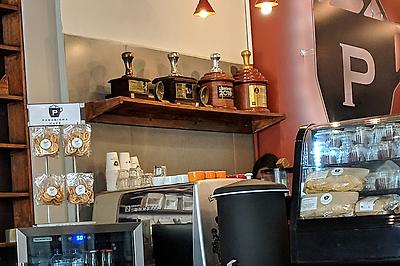
Day 1:
After flying Tuesday night and Wednesday morning, our plane arrived in Guatemala City around noon Wednesday. After passing through customs, we hopped in a car and went straight to our first meeting at Cafe Paradigma in Zone 4.

Owned and operated by 2012 World Barista Champion Raul Rodas, Cafe Paradigma has a lovely indoor/outdoor seating space and Raul’s trophies casually displayed on a shelf. While Paradigma is worth a trip just for the cafe, we ventured back to the cupping lab where our friends at Onyx Coffee had set up a table of coffees for us to taste. We had some great conversations about the state of Guatemalan coffee and what to look for during our trip as we cupped some super fresh beans with a great view out the sunny windows. If you’re in Guatemala City, Cafe Paradigma is a must-visit cafe for sure!
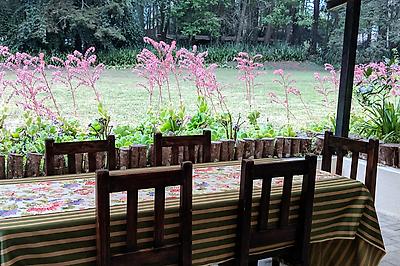
Even after cupping almost 20 coffees, our overnight flight started to catch up to us, and we headed out to our Airbnb for the evening - just east of the city center. The building was a quaint cottage on the grounds of an old chapel, with an outdoor breakfast area and garden.
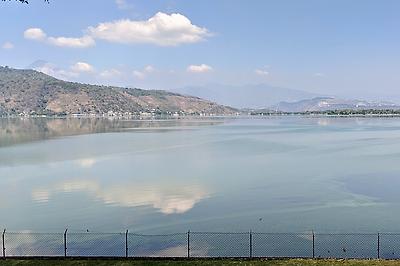
Day 2:
On our second day in Guatemala, we met up with Ana from Terra Negra, one of our importer friends in Guatemala that helped us import some of the club’s favorite Guatemalan coffees from last year. Before heading out to another round of cuppings, she took us to her favorite spot near the city: the beautiful Lake Amatitlan just southwest of the city. After a relaxing lunch by the lake, we headed out to get back to work tasting coffees.

After lunch, we visited the Dinamica dry mill in Guatemala City. We spent the first part of our visit tasting even more fresh-crop coffees from around Guatemala in their state-of-the-art cupping lab. Chespi, the owner of a few farms whose coffees we were cupping, joined us at the mill and even shared some samples of yeast-fermented coffees he’s been experimenting with.
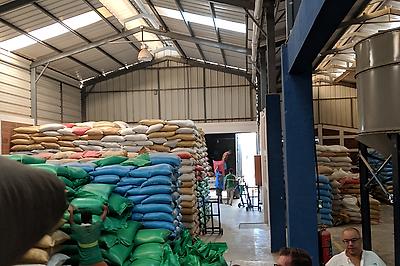
After the cupping, we took a walking tour of the facility. Dry mills are typically a coffee’s last stop in-country before being exported - and the mill at Dinamica was impressive in scale and how many farms were represented. In Guatemala, the coffee growers process their cherry either on their farms or at a wet mill near their farm. After processing, the dried coffee beans are in a state referred to as ‘parchment’ - named after the thin, papery husk that surrounds the bean when the fruit and skin of the cherry have been removed. Green coffee preserves its quality much better when it is in parchment, so the coffee is left this way and delivered from the farm to the mill.
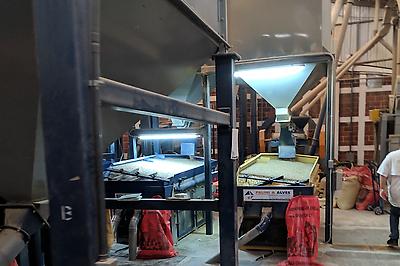
The mill is where the most intensive quality control takes place to ensure that only the best beans are exported. Each lot of coffee is loaded into a hopper and fed through the production line. First, the parchment is removed and the green beans are passed through a de-stoner, which filters out any rocks or debris that may have mixed in with the coffee during processing.
Next, the coffee is sorted to ensure consistency and quality via a densimetric table. These function a bit like angled air hockey tables that sort the beans by density. The lighter, less dense beans are lifted farther by the air pressure from the table and travel farther down the slope while the dense, high-quality beans aren’t lifted as far and stay towards the top. Dividers at the edge of the table channel the different densities to collectors.

After density sorting, the beans are passed through an optical sorting machine that removes any remaining defects or foreign objects. The beans are dropped past a bright, constant light source and a computer scans each bean as it falls. Any discolored or damaged beans are punched out of the stream by precise jets of air, leaving only the highest quality beans to be bagged and shipped. Not all mills employ this complex piece of equipment, and it was great to see one in action at Dinamica. We finished off the day with some Guatemalan rum and great conversation at Chespi’s home and hit the hay.
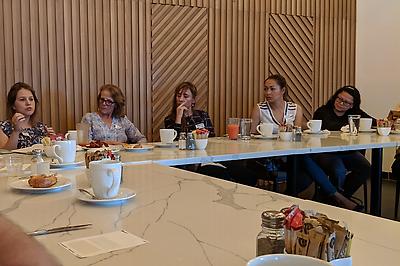
Day 3:
The next morning, we found ourselves at a nice cafe in Guatemala City’s Zone 14, where we took part in a Q&A session with Asociación de Mujeres en Café Guatemala, an organization for women coffee professionals. It was great to meet with them and provide our perspective on the coffee industry as buyers, and hear their ideas and thoughts about the future of Guatemalan coffee. In recent years, declining prices in the commodity market and labor shortages have put a strain on many Guatemalan coffee farms, but the tone of the meeting was hopeful and looking towards new ways to make coffee production in Guatemala more sustainable. Hearing their stories reaffirmed our commitment to paying top dollar for quality coffees, which helps ensure that producers are able to pay their workers fairly and sustain their business for years to come.
After breakfast, we piled into an SUV and headed toward Esquipulas, a town near the border with Honduras and El Salvador. The drive took most of the rest of the day, although we did make a necessary stop for lunch at Pollo Campero - a Guatemalan original!
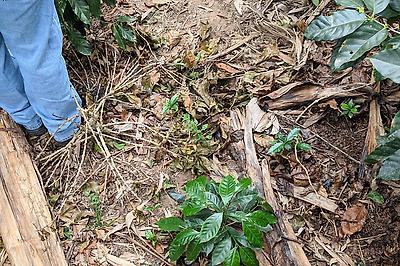
Day 4:
We woke up early and were greeted by farmers from Esquipulas Coffees, an exclusive group of farmers committed to furthering specialty coffee production in the region. We spent the day visiting different members’ farms, learning about the local intricacies of coffee farming in Esquipulas.
At the first farm we visited, we learned about how some coffee farmers are adapting to fluctuating coffee prices. Many farmers have started planting secondary crops like bananas to have supplementary income when coffee yields or prices are low, and this farmer discovered an additional benefit. When segments of banana tree are cut and left between young coffee plants, the banana tree segments leech their water into the soil, which gives the coffee plants an added boost without additional irrigation.
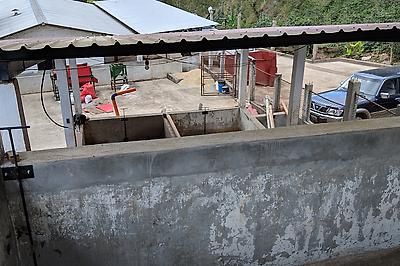
At another farm, we got a tour of the wet processing facility where coffee cherries are floated, fermented, and pulped to achieve what we know as “washed coffee”. Each farmer has their own process for how long coffees are floated and fermented before pulping, and it’s always interesting to see a farm’s process and learn more about what brings the best flavors out of coffee at each origin.
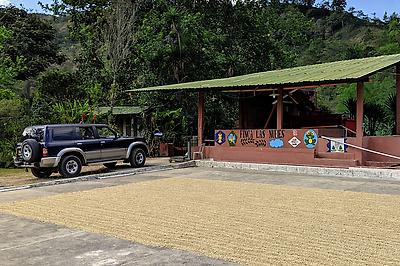
We had a delicious lunch at a lovely farm high up the hillside that had a small lot of coffee drying on the patio. This farm is unique among the farms we visited in that the producer actually lives on-site. Many farms are high in the hills and somewhat remote so farmers will live down in Esquipulas and drive up each day to work, but this farmer preferred the more remote life - and with such a gorgeous view on the road to his farm, we see where he’s coming from!
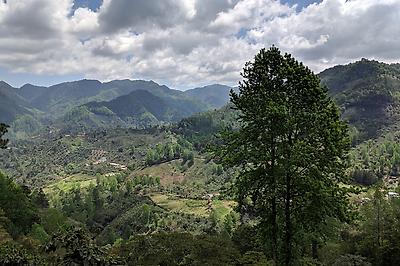
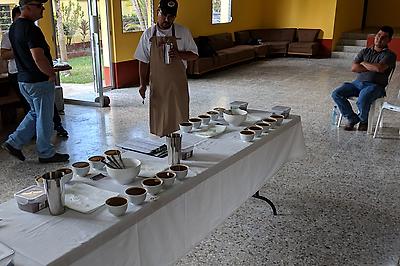
After visiting several member farms, we set up a cupping lab at the event hall of La Planta park, where we tasted coffees from each of the producers that make up Esquipulas Coffees. The farmers all work together to improve their coffees and processing methods, but there was an element of good-natured competition to see whose coffees would perform the best. After much deliberation, we recapped our impressions of the coffees over a meal back in Esquipulas and relaxed together.
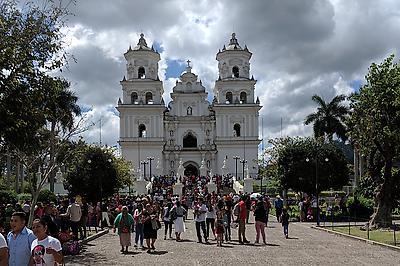
Day 5:
We had a few hours of tourist time before driving back to Guatemala City, so we visited the Cathedral Basilica de Esquipulas, which houses a well-known Black Christ figure that is a major destination for Catholic pilgrims across Central and South America. The Basilica square was crowded on a Sunday morning, so we spent some additional time walking through Esquipulas taking in the shops and enjoying the sunny weather.
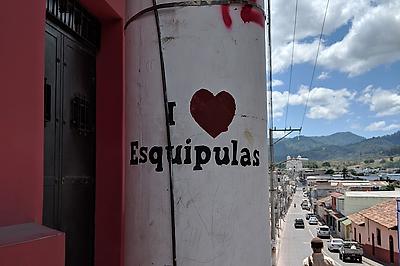
After a good walk around town, we said goodbye to Esquipulas and embarked on the drive back to Guatemala City, which took the rest of the afternoon.
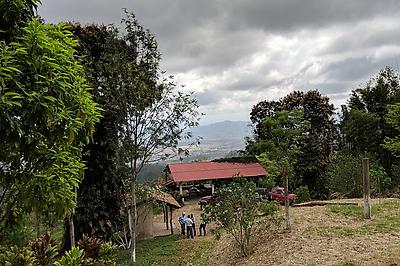
Final Thoughts:
Driving from Guatemala City to Esquipulas, we were struck by just how beautiful the country is. The region’s volcanic history means that there is almost always a stunning volcano in the distance, and even in the dry season, the areas we visited were full of lush green plants and colorful flowers in bloom. One thing we noticed is that many farms in Guatemala are a bit bigger than other origins. Many of the farmers in Esquipulas that we met described their 20-30 hectare farms as “just a small piece of land” - whereas in Huila, Colombia a small farm is something around 2 hectares. This means that many producers in Guatemala have the opportunity to do more lot separating and experimentation, which is definitely happening.
Everyone we met was very enthusiastic about the future of Guatemalan specialty coffee. Even when talking about challenges like the falling commodity coffee prices and their effect on the coffee-picking labor force, the focus of the conversation was always on progress and solution tactics that will build a more sustainable coffee industry in Guatemala. From Chespi’s yeast-fermentation experiments to the producers in Esquipulas trying out naturals for the first time, there’s a serious commitment among specialty producers in Guatemala to expand their skills in the pursuit of unique flavors and ever-increasing cup quality. It’s an infectious excitement that resonates even now that we’ve returned, and we can’t wait to share the next crop of Guatemalan coffees with the club.